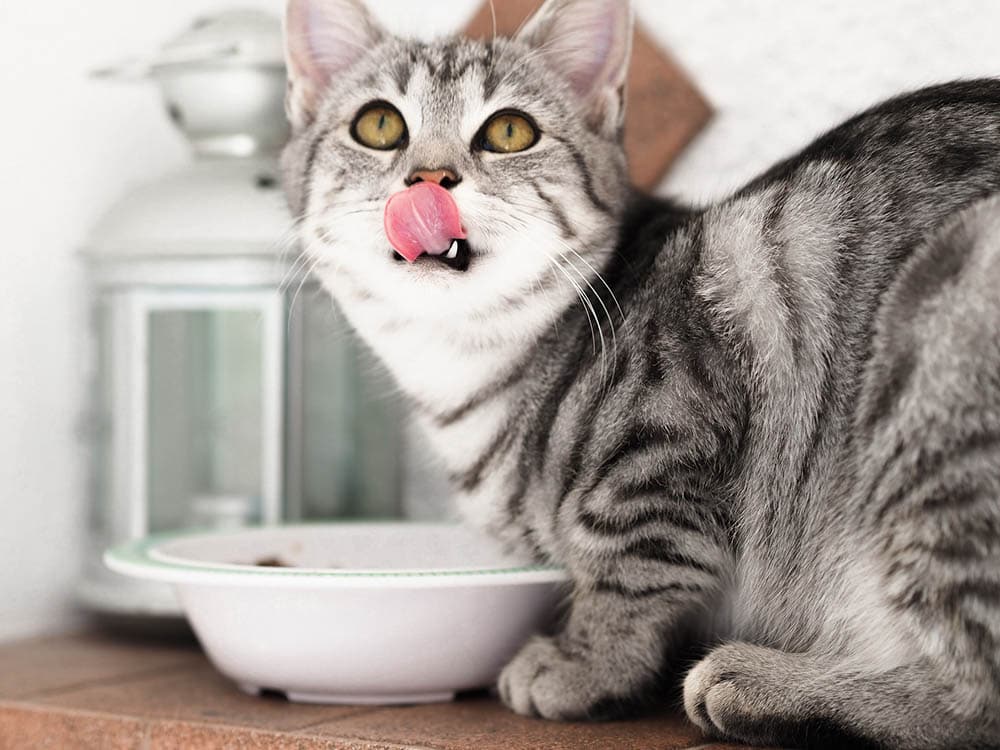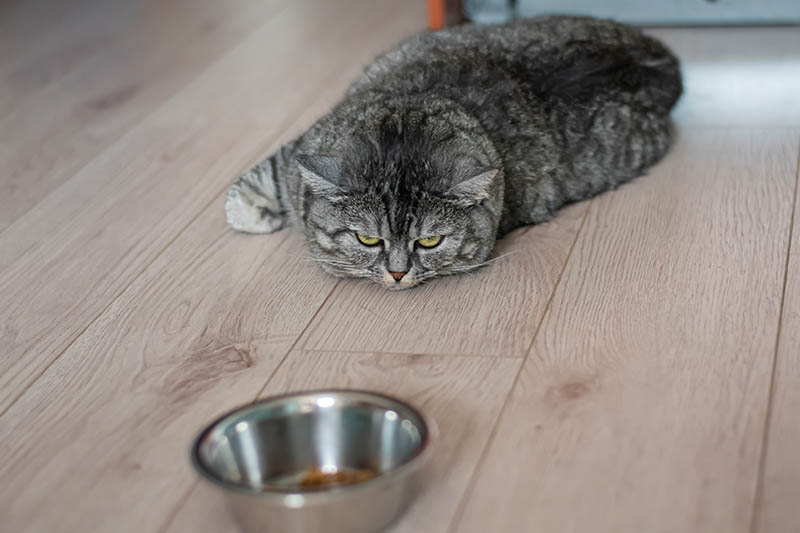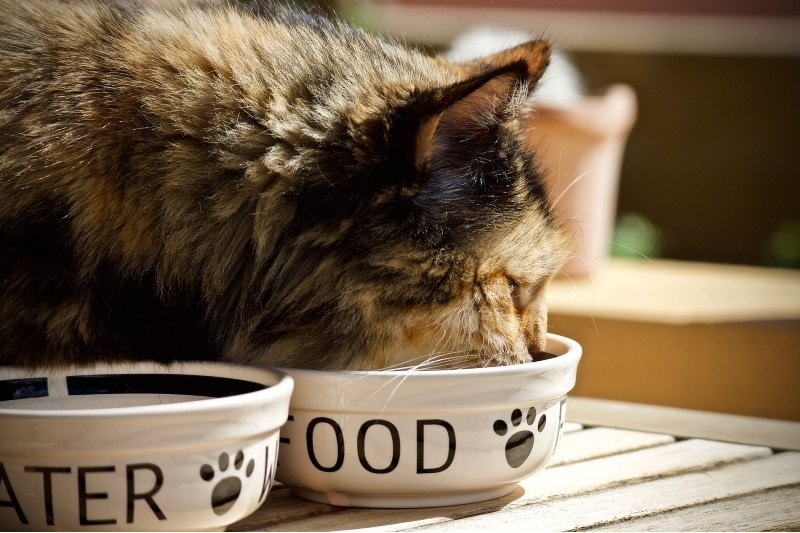VET APPROVED

The information is current and up-to-date in accordance with the latest veterinarian research.
Learn more »Digestion is the process of breaking down ingested food and turning it into nutrients, which the cat’s body uses for energy, growth, and cell repair. All these processes are essential for survival. The digestion process also involves eliminating waste by creating and excreting feces. Additionally, digestion plays a vital role in helping to maintain the proper balance of fluid and electrolytes (salts) in the cat’s body.
The digestive system, or gastrointestinal tract, is a long, twisting tube with specialized segments or organs. It starts at the mouth and ends at the anus. The digestive system also relies on the action of accessory organs that are not part of the tube but are connected to it. Accessory organs (the liver and the pancreas) produce and secrete the necessary salts and enzymes to break down food. The stomach and intestines are made up of a series of muscles that help move the food along the way.
It should take around 10–24 hours for something your cat has ingested to work through their system. While this range might sound very wide, in humans, the range is even greater: 24–72 hours. The amount of food, the type of food, and the water intake are just some of the many variables that can affect digestion time. In this article, we’ll explain each part of the cat’s digestion process.

The 7 Important Parts of the Cat’s Digestive System
1. Mouth
When a cat first ingests food, digestion starts in the mouth. A cat’s mouth has specialized teeth made for shearing and tearing through their prey. Unlike humans, cats do not chew on their food but rather tear and swallow it.
Salivary glands in the cat’s mouth secrete saliva to lubricate food and protect the oral mucosa. Saliva has antimicrobial properties to help keep the mouth clean.
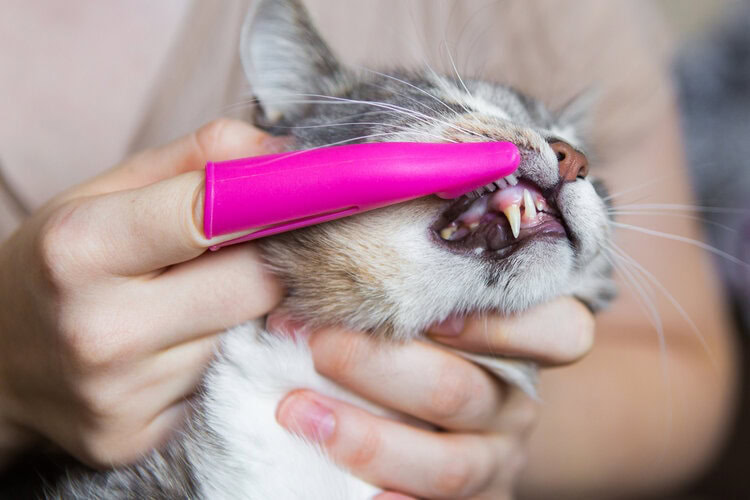
2. Esophagus
Food that leaves the mouth into the esophagus is called a “bolus.” The esophagus is a tube that connects the mouth to the stomach.
3. Stomach
A cat’s stomach has strong muscles that break down the food mechanically. The stomach has acid-producing glands that chemically help this process. Gastric juice contains ions and proteases, which are enzymes that break down proteins. When the bolus is ready to leave the stomach, it has been processed into a thick liquid called “chyme.”
4. Small Intestine
This is where the nutrient extraction from cat food occurs. The first portion of the small intestine is called the duodenum. The duodenum receives the chyme from the stomach as well as secretions from the accessory digestive organs, the liver, and pancreas. Iron absorption takes place in the duodenum. The large middle portion of the small intestine, where nutrient absorption takes place, is the jejunum.
The last portion of the small intestine is called the ileum. This is where bile salts and vitamin B are absorbed. The remaining ileum contents empty into the large intestine.
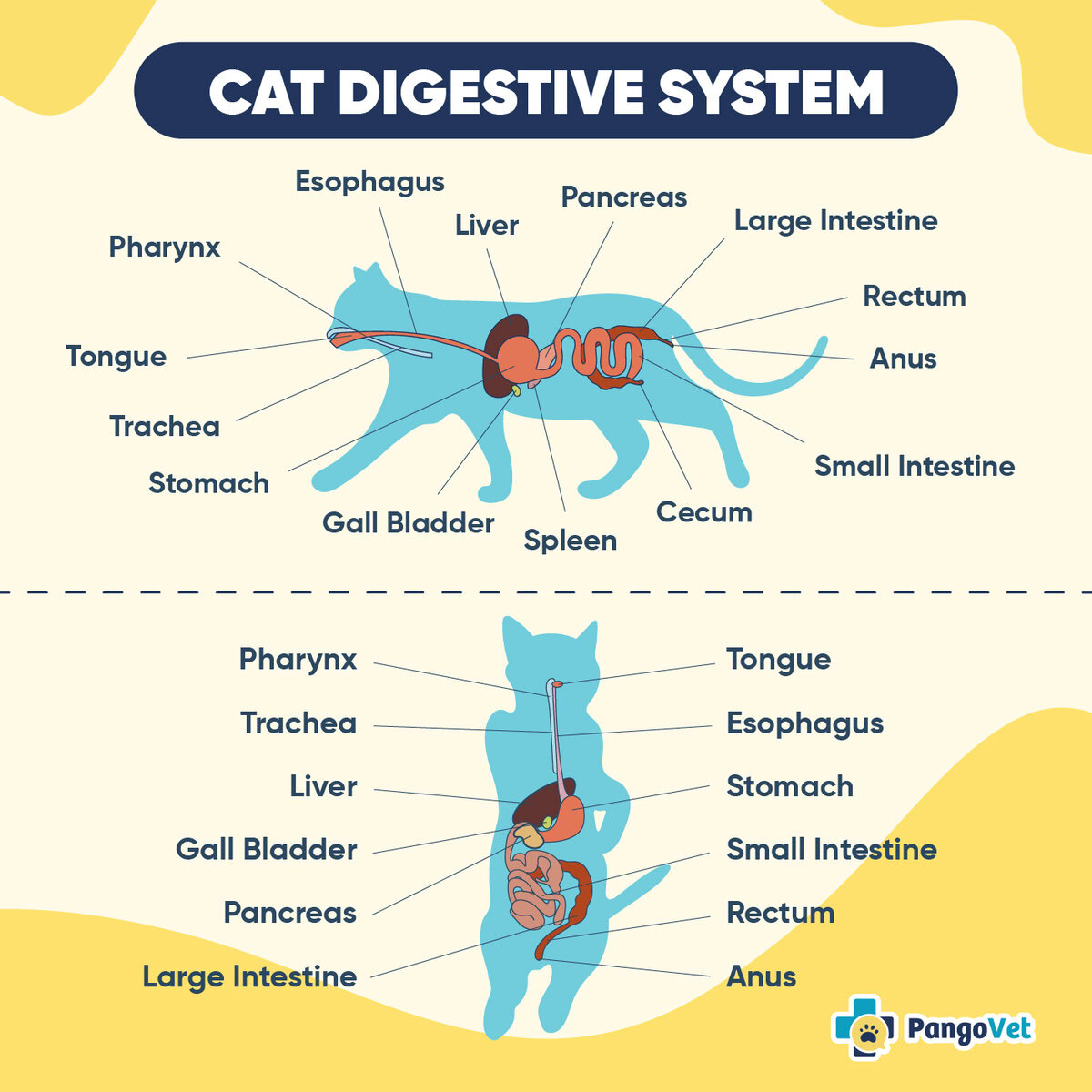
5. Liver
The liver performs many vital functions in the body, but its only role in digestion is producing bile. Bile is a green-tinted fluid that assists in the breakdown and absorption of fats. It enters the duodenum through the bile duct. When digestion is not occurring, like between meals, bile is stored in the gall bladder.
6. Pancreas
The pancreas is a gland that produces some of the most potent digestive enzymes that help break down food into absorbable nutrients. These enzymes are released into the duodenum, where they carry out their functions. Besides its digestive functions, the pancreas is also involved in regulating blood sugar levels.
7. Large intestine
The large intestine is also divided into four regions: the colon, cecum, rectum, and anal canal. Water absorption and the formation of feces start in the colon. The first portion of the colon is the ascending colon. A blind pouch called the cecum hangs just below the point where the ileum joins the large intestine. Feces are moved from the colon to the rectum, where they are stored before leaving the body via the anal sphincter.
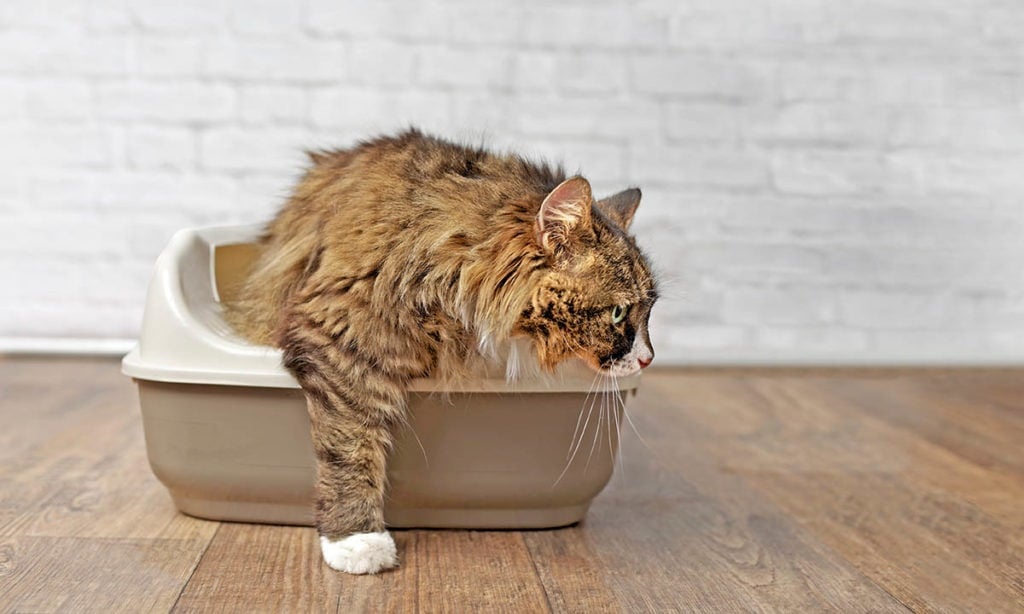

Final Thoughts
Digestion is a complex process that allows a cat to break down food to obtain the required nutrients for survival and eliminate waste. Several organs work together to make this possible. A cat will take between 10 and 24 hours to fully digest their food and excrete the waste product as feces.
Still have questions about your cat’s digestive process? Our vets can help!
Featured Image Credit: Laura Chouette, Unsplash
